Espalier, Si Vous Plait
Horticulture, we established, is part science, part art. I’m intrigued by the science, but the art is what drew me to gardening, and what keeps me engaged. Sometimes I find inspiration for my own garden when I’m distracted from it. That’s how I reacquainted myself with this most artistic form of horticulture, the espalier. I recently drew a landscape plan for my sister, who really wanted a structured, European garden with very little maintenance. (Okay, she wants no maintenance. None. Does not want to step foot in it. I can’t believe we’re even related.) I managed to give her a beautiful, simple plan that will work for her. In my research for her design, I came across this, the perfect marriage of form and function: Espalier! ESPALIER!!! Gardener’s friend and artist’s dream. And, oh-so-European!
Espalier styles (photo courtesy of Stark Bros Nursery)
Espalier is defined by Merriam-Webster’s online dictionary thusly:
noun es-pal-ier \i-ˈspal-yər, -ˌyā\
- a plant (such as a fruit tree) trained to grow flat against a support (such as a wall)
- a railing or trellis on which fruit trees or shrubs are trained to grow flat
Gloriously, espalier can also be a verb, to espalier. As in, “Excusez-moi, Monsieur, might we espalier that pear tree?”
Espalier is a French word, derived from an Italian word, derived from a Latin word, meaning, of all things, “shoulder blade;” the shoulder being a support for a great many things, I suppose. (Epaulet is a derivative. That’s the decorative shoulder piece on a military uniform. You see the connection.)
Those genius horticulturists, the Europeans, insisted on growing things that did not actually like their climate. (See “Ode to the Orangery”) No matter, they decided. Apples need support? We’re on it! Insulation? Say no more. And they went to work.
Now, adaptation, alone, is as old as time. That’s not the genius part. The Europeans, patrons of all things Art, simply married practical needs with classical design, as has always been their custom, and the espalier was born, circa the 17th Century or so. There is quite a bit of skill involved with espalier; training a tree is not for the faint of heart. Clearly Europeans were undaunted. Thankfully so.
Fruit tree trained on fence (photo courtesy of Roger Foley)
I’ve got a long, white, brick wall that is begging for an espalier, y’all. My favorite garden center, Platt Hill Nursery, up the road in Carpentersville, actually has espaliers, already trained on wood and wire. They might require a second mortgage.
If we're being historically correct, only an espalier in the truest sense will do: fruit tree, wall, labor-intensive training. However, in light of the current penchant for loose interpretations of practically everything, there are alternatives to espalier that have the same Euro-vibe without the cost and learning curve. They are, technically speaking, not espaliers. I’m okay with that, since, well placed and manicured, they give the same impression. Frankly, every time I say “espalier” in public, I have to clarify what I’m talking about. Who’s going to challenge me on it?
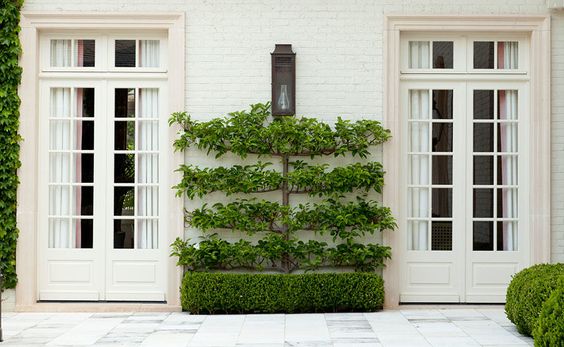
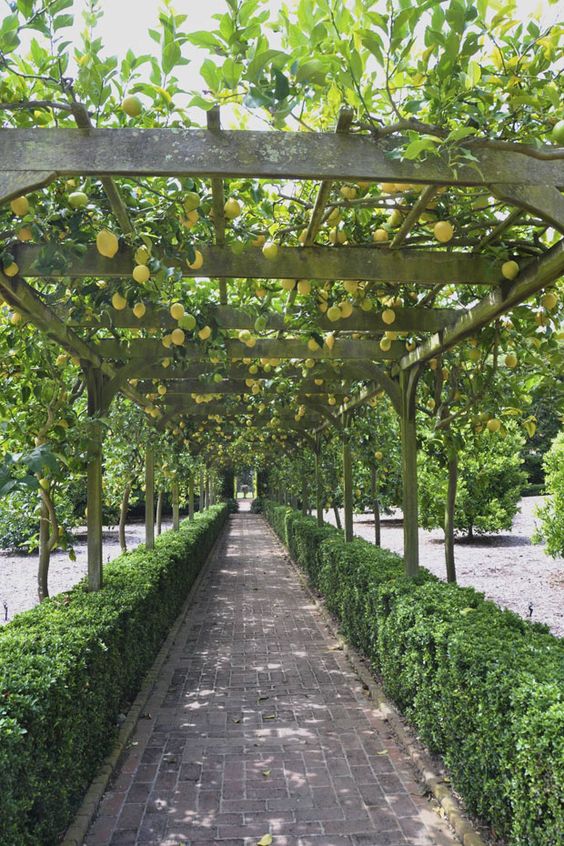
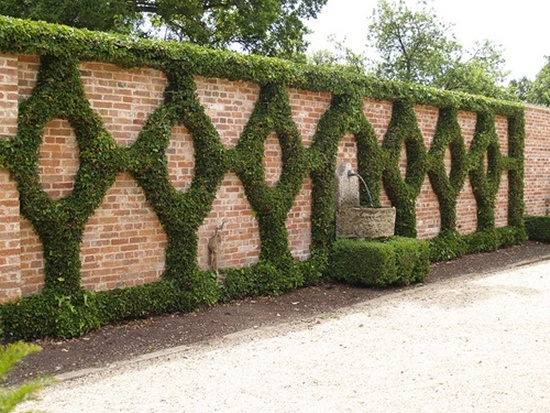
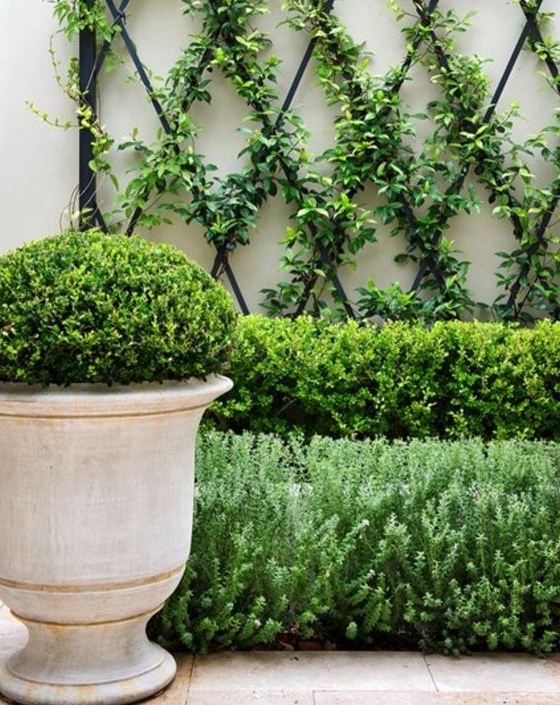
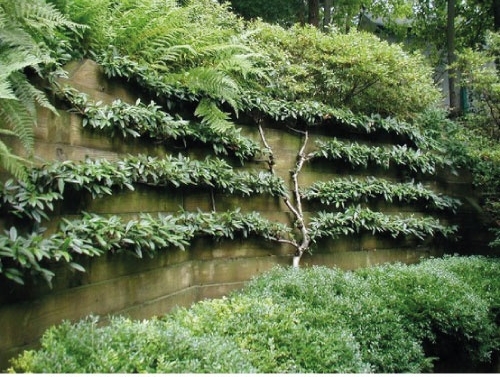

1. Howard Studio Design 2. Eat, Drink, Garden 3-6. Source unknown







